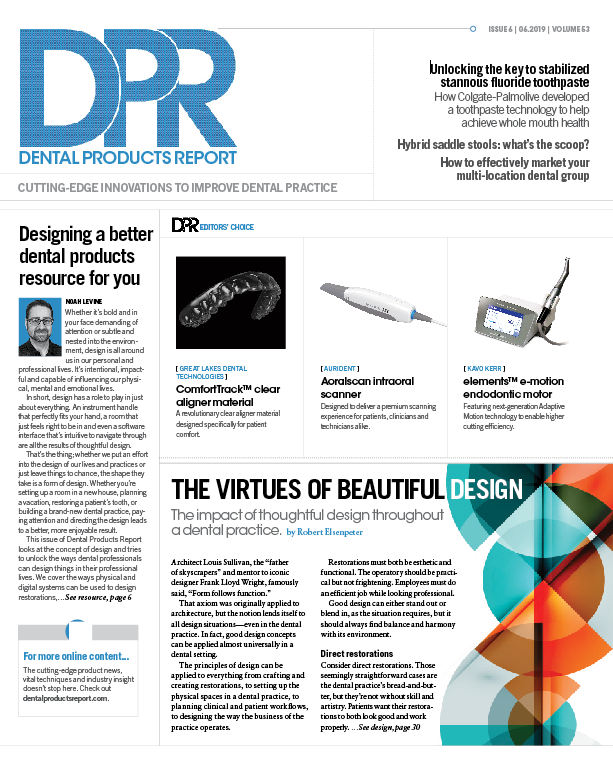Hybrid saddle stools: what's the scoop?
Why our ergonomics expert recommends this style of chair to reduce postural problems.

Dear Bethany: My hygienist recently purchased a stool that’s halfway between a saddle stool and a traditional stool, called a hybrid saddle stool. After finding it difficult to be completely comfortable using her old saddle stool during exams, this stool was a welcome relief. Do you recommend hybrid stools for dentists? If so, which ones?
Dear doctor: Saddle stools have become increasingly popular on the dental market over the past 15 years-and for good reason! The saddle stool brings a welcome solution to the postural challenges posed by seated dentistry by placing the dental operator’s pelvis in a completely neutral position, promoting the body’s natural spinal curves.
When seated on a saddle stool, the thighs slope steeply downward (essentially halfway between standing and sitting), so the saddle can be thought of as “supported standing.”

A new variation of the saddle stool called a hybrid saddle stool is now available. It offers identical seating to a true saddle stool with the thighs sloping steeply downward but via a different seat shape. While a true saddle stool has a saddle-shaped seat, which allows the thighs to slope steeply downward, a hybrid saddle stool has a flat seat pan and achieves the steep thigh angulation via a triangle-shaped seat, or cut-out areas, where the thighs can slope steeply downward.
Adjustment for a hybrid stool is simple: 1. Adjust the height until the thighs are at 45º downward angle. 2. Leave the seat of a hybrid saddle stool flat. Don’t tilt the seat forward or backward unless you have excessive lumbar curvature (hyperlordosis) or flattening of the lumbar spine (hypolordosis).
More from the author: How to mitigate common hip complications
When is a hybrid saddle stool a better choice than a true saddle stool?
- Due to its flat seat shape, the hybrid saddle helps male dentists who want to avoid compression in the genital area yet glean the benefits of saddle stool positioning.
- For individuals with hyperlordosis, the hybrid may prevent worsening of the condition.
- If you want a backrest, because all hybrid saddle stools come with backrests.
- For operators who want to make a more gradual transition from a traditional dental stool to a saddle stool.
For dentists, a hybrid saddle stool can also help reduce neck and shoulder pain. Dentists who find they have to lift their arms to the sides when working can easily lower the patient when seated on a hybrid saddle stool, allowing more relaxed neck and shoulder musculature. It’s also easier to gain close proximity to the patient when the thighs are steeply sloping downward, which minimizes excessive forward reaching.
There are several styles of hybrid saddle stools on the market, and the main differences lie in the backrest style, seat shape and tilt option. I believe backrests are beneficial on saddle stools when used in dentistry; however, the backrest must be the correct shape and size to properly support the lumbar spine.
For a list of hybrid saddle stools the author utilizes in her in-office consultations, email info@posturedontics.com.
